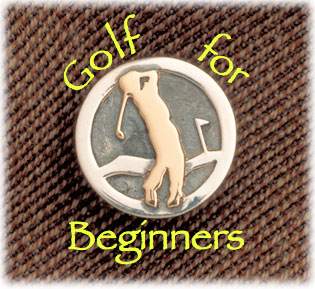
Scioto (pronounced like Toyota, "sigh-OH-tuh"), Country Club is ranked in the top 100 in the world for several reasons: It is a Donald Ross design built in 1916; It has hosted five U.S.G.A. championships; It is the course that Jack Nicklaus played golf on as a young man and Bobby Jones won his first U.S. Open at Scioto. Scioto (ranked #71 in the world) was founded in 1916. One of the co-founders was Samuel P. Bush, great-grandfather of our current "decider", although I will try not to let this fact negatively influence my impression of the course.
Jones won the U.S. Open in 1926 at Scioto only fifteen days after he won the British Open at Lytham & St. Annes. Remember that this is before the era of jet airplanes, when golfers crossed the Atlantic by boat. At both Lytham and Scioto, Jones came from behind to win. At Scioto he gained the lead on the 17th hole in a final day of 36 hole play.
The Buckeye State has an abundant amount of good golf courses. Columbus alone has three world ranked courses - Muirfield Village, The Golf Club and Scioto. The state has two other courses in the world's top 100 - Inverness in Toledo and Camargo in Cincinnati. It also has three other highly-regarded courses - Firestone, Canterbury and Double Eagle.

Second green at Scioto
Like its Donald Ross designed neighbor, Inverness, Scioto has small greens. During my round I putted or chipped a lot off the collar of the greens, as did everyone in my foursome. Even if you hit the green, often times the ball bounces off or ends up on the fringe or in the rough. This is in part because they are small greens and in part because the edges are slightly crowned - not like an overturned bowl or a traditional Pinehurst #2 green, a lot more subtle. The net effect of the green designs is that the ball rolls off a lot. The approach shot to most greens is a narrow fairway area, taking away any possibility of a bump and run shot. The elevated greens are so well bunkered that the correct shot to hit into each green is a high shot that spins or lands softly. The picture above of the second green is typical of most greens on the course.

Bunker on the 2nd fairway
Scioto has been modified from its original 1916 design. All that really remains of the original Donald Ross design is his routing. The greens were redone by Dick Wilson in 1963. Although they are not Ross's originals, I found them to be challenging and interesting. As a classic Ross routing, Scioto represents the archetypal tree-lined, American-style target golf course. It is one of the most perfectly manicured and conditioned courses I have ever played.

3rd green
My favorite hole on the course was the par five eighth. Like Peachtree in Atlanta, Scioto has a creek that meanders through the rolling hills and provides an effective hazard on many holes, including the eighth. The eighth is a dog-leg through the rolling terrain that plays over water to a slightly elevated, well-bunkered green.

Approach to the 8th green
Although the course doesn't really have any similarities to a links course, the stone walls that ring a couple of holes on the back nine brought back memories of the stone walls at Muirfield and North Berwick. Below is the stone wall along the 12th fairway.

Stone wall on 12th hole
The majority of the golf courses in the world's top 100 are all about golf. Take, for example Shinnecock, Pine Valley, The National Golf Links, Chicago Golf, San Francisco Golf, Muirfield, Cruden Bay, Dornoch, Royal County Down, Royal Portrush, etc. They are not country clubs, but are focused on golf only. Scioto is the quintessential Country Club, offering a full array of activities. It has a swimming pool for families, tennis courts, an exercise room and is setup to accommodate both men and ladies. It has a series of patios, a grill room, restaurants, and even a barber shop that is still in use. You can see that Scioto is located in a nice neighborhood of Columbus by the stone houses, seen in the pictures, surrounding many of the holes, although the course doesn't have a feel of being hemmed in by houses. Jack grew up in the neighborhood behind the course.

16th green
We took caddies at Scioto, as I always do if caddies are available. I was surprised to see most members riding in carts, especially well-fed ones. One gentleman riding up and down the fairways had an unseemly resemblance to Rush Limbaugh. My advice to you porkers is lose the carts; you might actually avoid that future operation to have your stomach stapled if you get some exercise. Hello people, golf is a walking game!
Part of the Scioto clubhouse is dedicated to the history of the championships played there and to its famous prodigy, Jack Nicklaus, and his teacher, Jack Grout. Visiting Scioto is a required part of a golfer's education to see the course where a pudgy kid from Columbus developed into one of the greatest golfers of all time. It is a rewarding experience to stand on the expansive driving range and imagine all the balls Jack used to hit.
I look forward to returning to Ohio in the not-to-distant future to complete my golfing education.
Scioto's Web Site







































